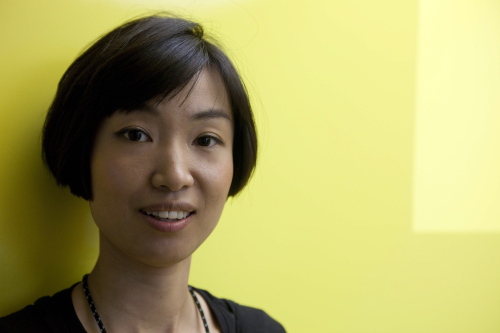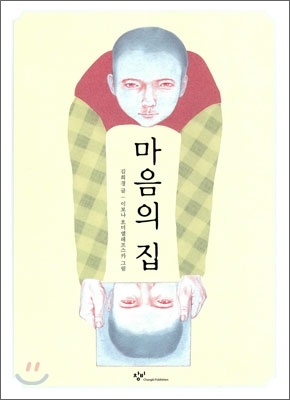What does it take to inform kids about a wide range of non-fiction topics?
Understanding kids’ sensibility to language and their use of language, children’s book writer Kim Hee-kyung answers.
 |
Children’s writer Kim Hee-kyung has been selected as the winner of the BolognaRagazzi Award at this year’s Bologna Children’s Book Fair. |
Kim, who also works as a program coordinator for the visually impaired at Leeum, Samsung Museum of Art, recently won the BolognaRagazzi Award in the non-fiction category at this year’s upcoming Bologna Children’s Book Fair.
First launched in 1963, the annual event is regarded as one of the leading professional fairs for children’s books in the world.
It is the first time ever for a Korean writer to win the honor, although five have received honorable mentions in previous years.
“Everything in this remarkably different, unaffected book ― gestures, dreams, memories and quotations ― is imbued with a vision of the world,’” said the juries in a statement.
 |
The cover of Kim’s “A House of the Mind: Maum,” the winner of the BolognaRagazzi Award. (Changbi Publishers, Inc.) |
“A House of the Mind: Maum” is Kim’s second children’s book.
“There is no solid storyline in this book,” Kim told The Korea Herald. “It only consists of really short sentences throughout, that sound rather like poems.”
In such a concise literary style, the book offers a rare philosophical account of the human mind ― what it does, how it feels and how it connects to the other.
“Everyone’s got his own mind,” Kim said. “But we don’t know what it is, really. And I thought our minds are very much like a house. That’s the metaphor I used for this book.”
Kim, who studied philosophy and art history at Ewha Womans University, wrote her first non-fiction children’s book, “Maps Always Talk,” back in 2009.
Entertaining and informative, the book introduced all kinds of maps, including family DNA maps, constellation maps and geographical ones.
For both books, Kim worked with Polish illustrators.
“The person who first suggested I write books for children was a freelance publisher,” Kim said. “And she had studied art history in Poland. She knew a lot of illustrators there, and I met a few of them through her.”
For “A House of the Mind: Maum,” Kim worked with Polish illustrator Iwona Chmielewska, whom she first met in Bologna, Italy, about three years ago.
“I had the transcript of the book with me at the time and my publisher translated its content for Iwona,” Kim said. “She agreed to work with us on the spot.”
Kim said writing for children can often be challenging.
“I don’t think writing books for children is necessarily easier than writing for adults,” Kim said. “In fact, it can be harder because you have to present complex topics in simple language.”
If one wants to label Kim’s books, they would belong in the non-fiction category. But Kim said she does not want to create works that are “too objective.”
“I want to write things that are neither fiction nor nonfiction,” Kim said. “I want to add a certain sentiment for kids on top of the factual information that I’d like to deliver.”
Having worked as a magazine reporter, Kim first became interested in working for the visually-impaired when she read a news article about an art gallery’s special tour program exclusively designed for people who have visual-impairment.
“A lot of children who are visually-impaired don’t go to bookstores because most of the stores don’t have Braille books for children,” Kim said. “My next book will be a Braille picture book for kids.”
By Claire Lee (
clairelee@heraldcorp.com)









![[Today’s K-pop] Blackpink’s Jennie, Lisa invited to Coachella as solo acts](http://res.heraldm.com/phpwas/restmb_idxmake.php?idx=644&simg=/content/image/2024/11/21/20241121050099_0.jpg)